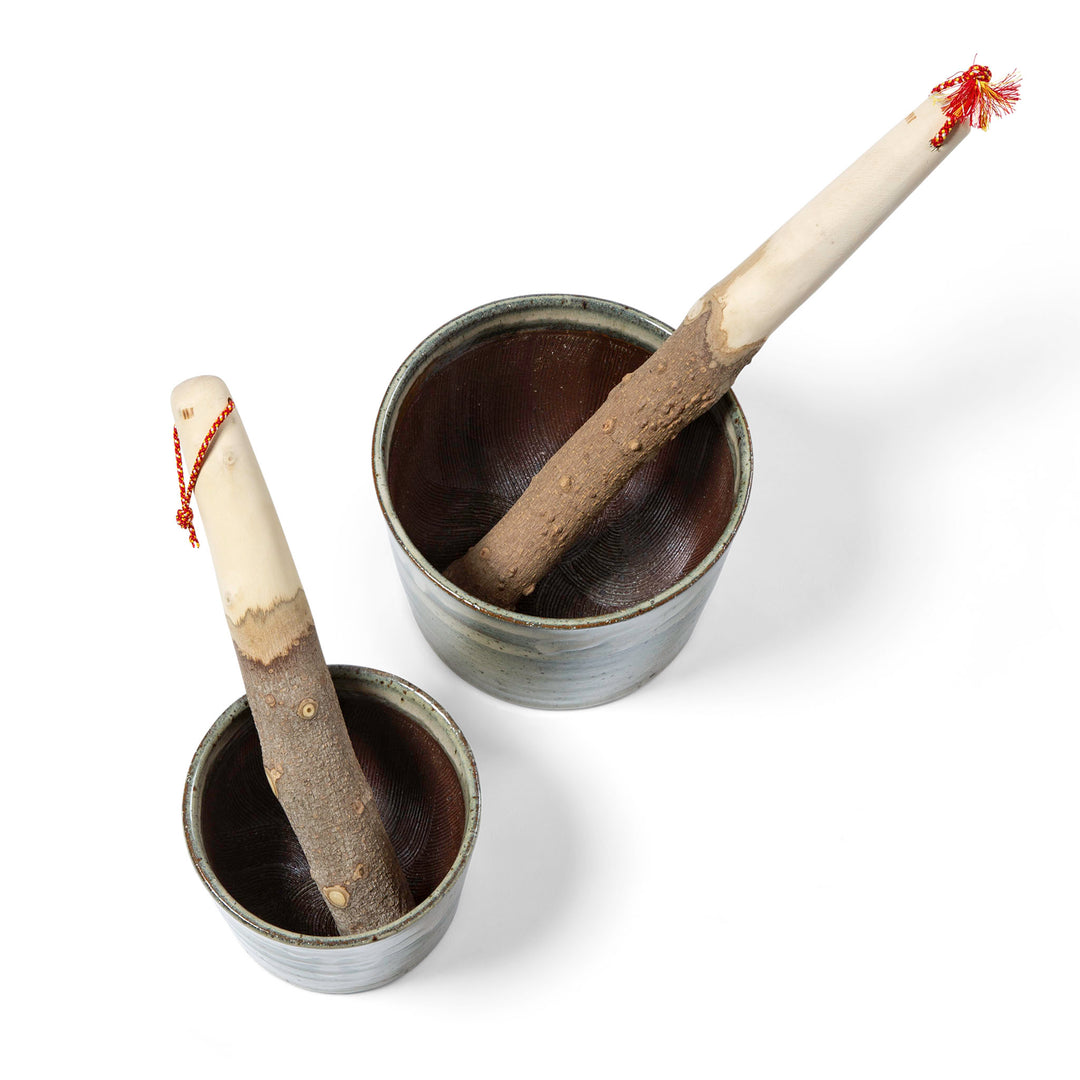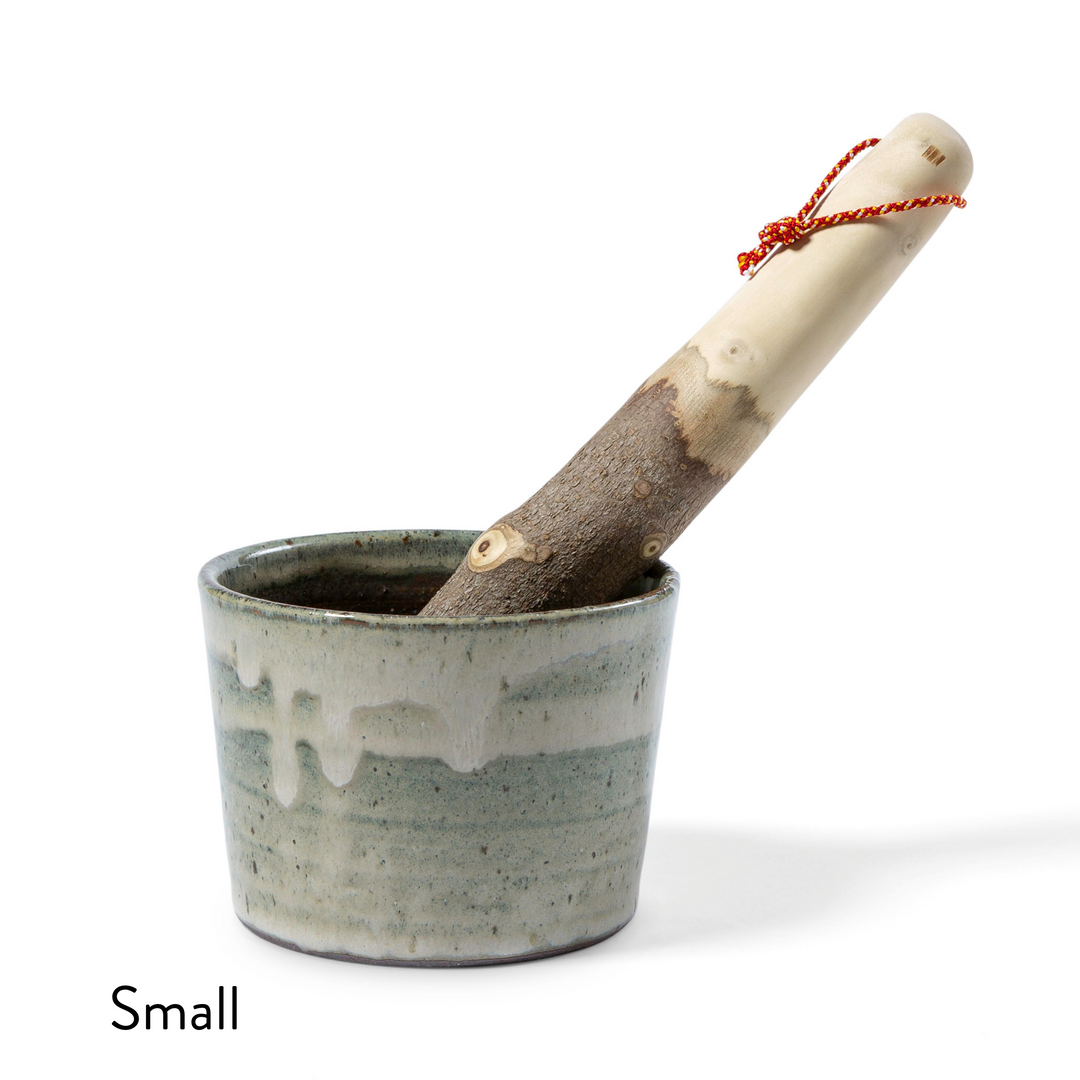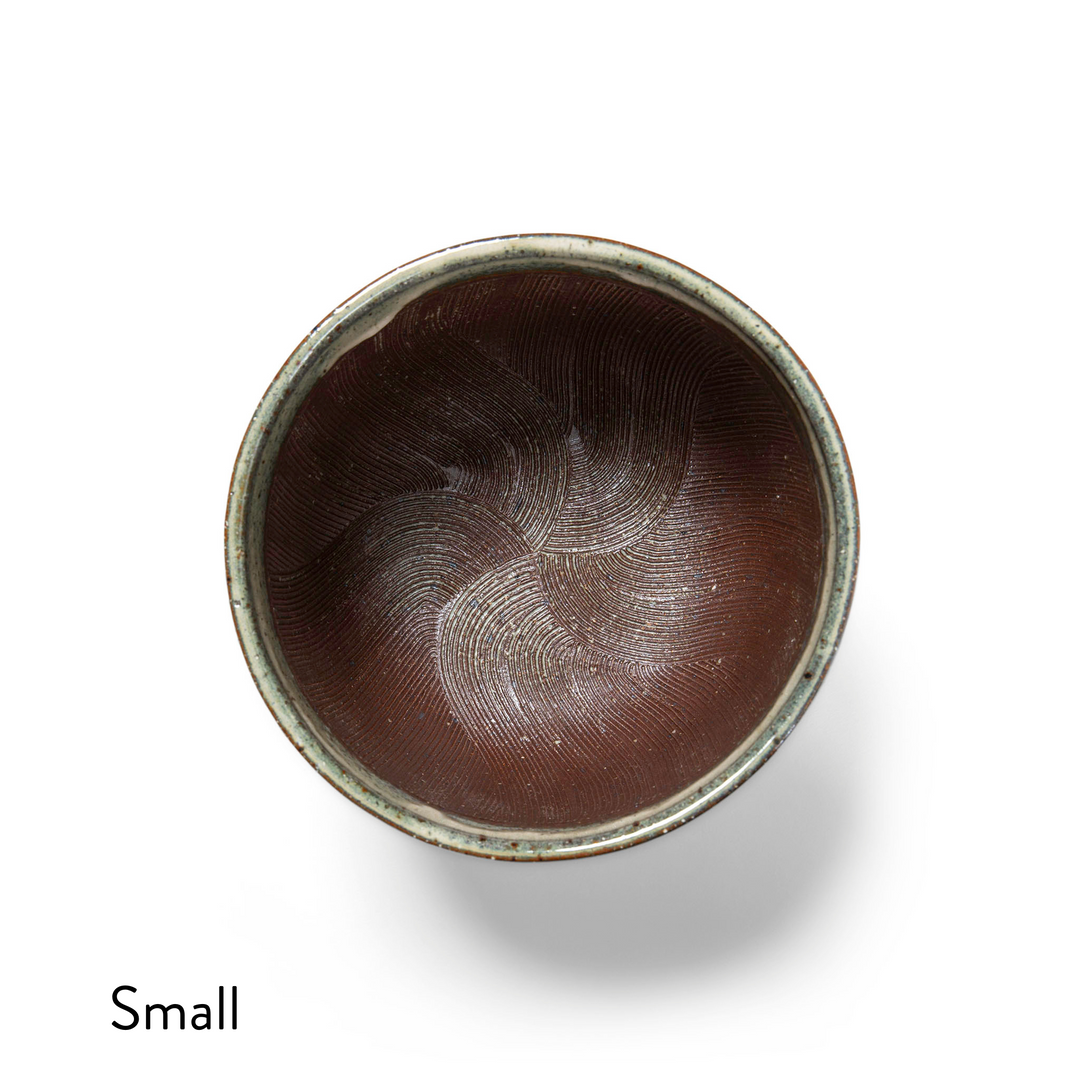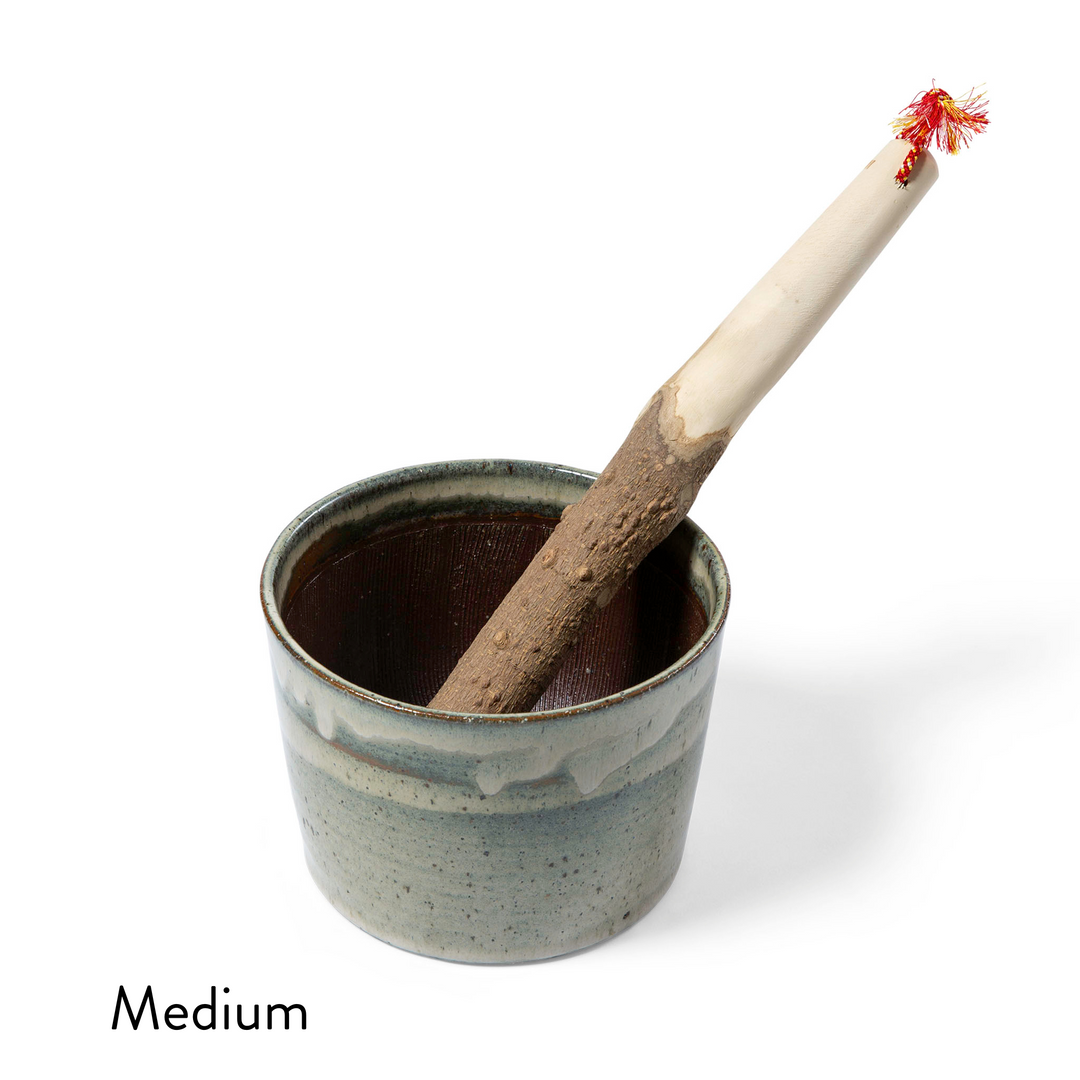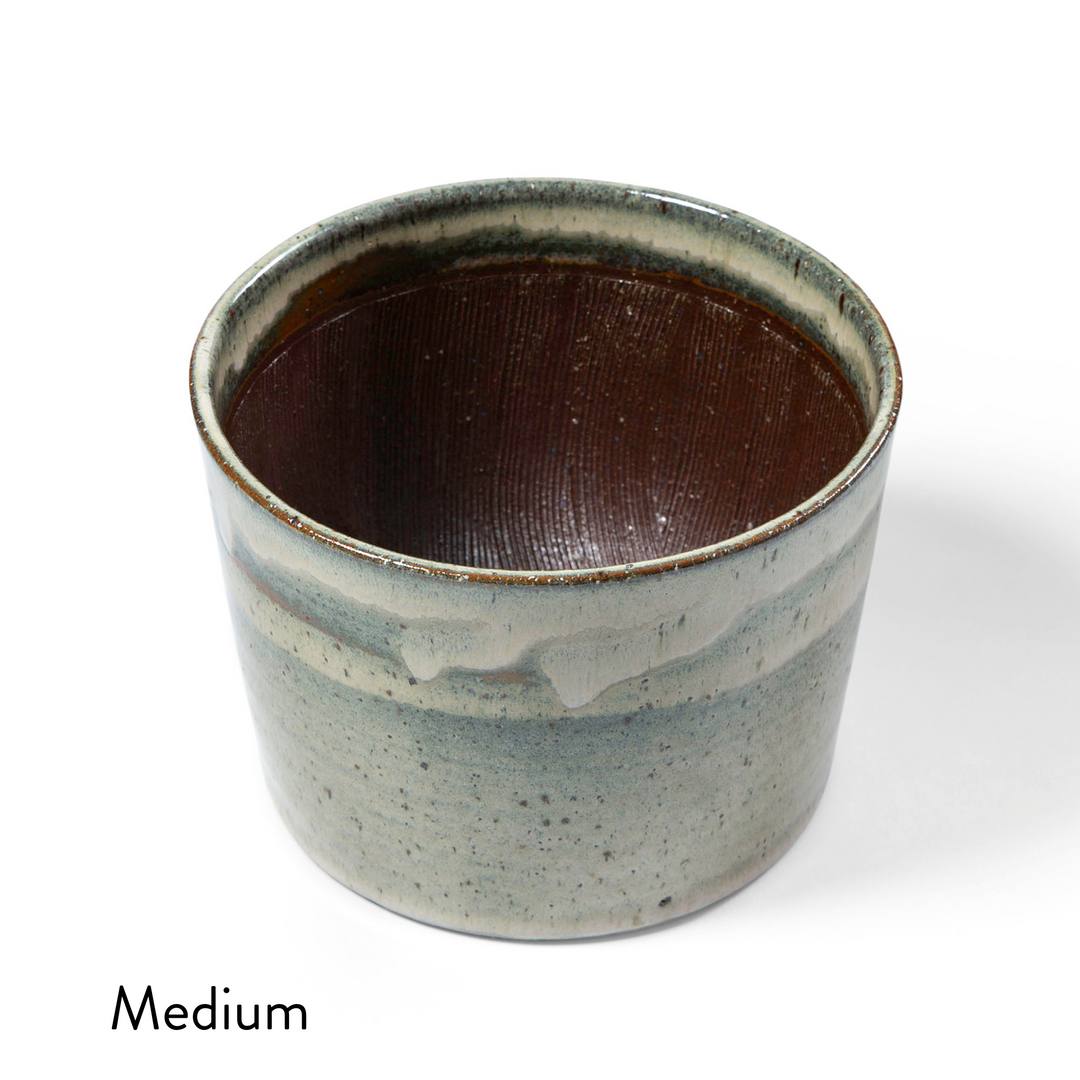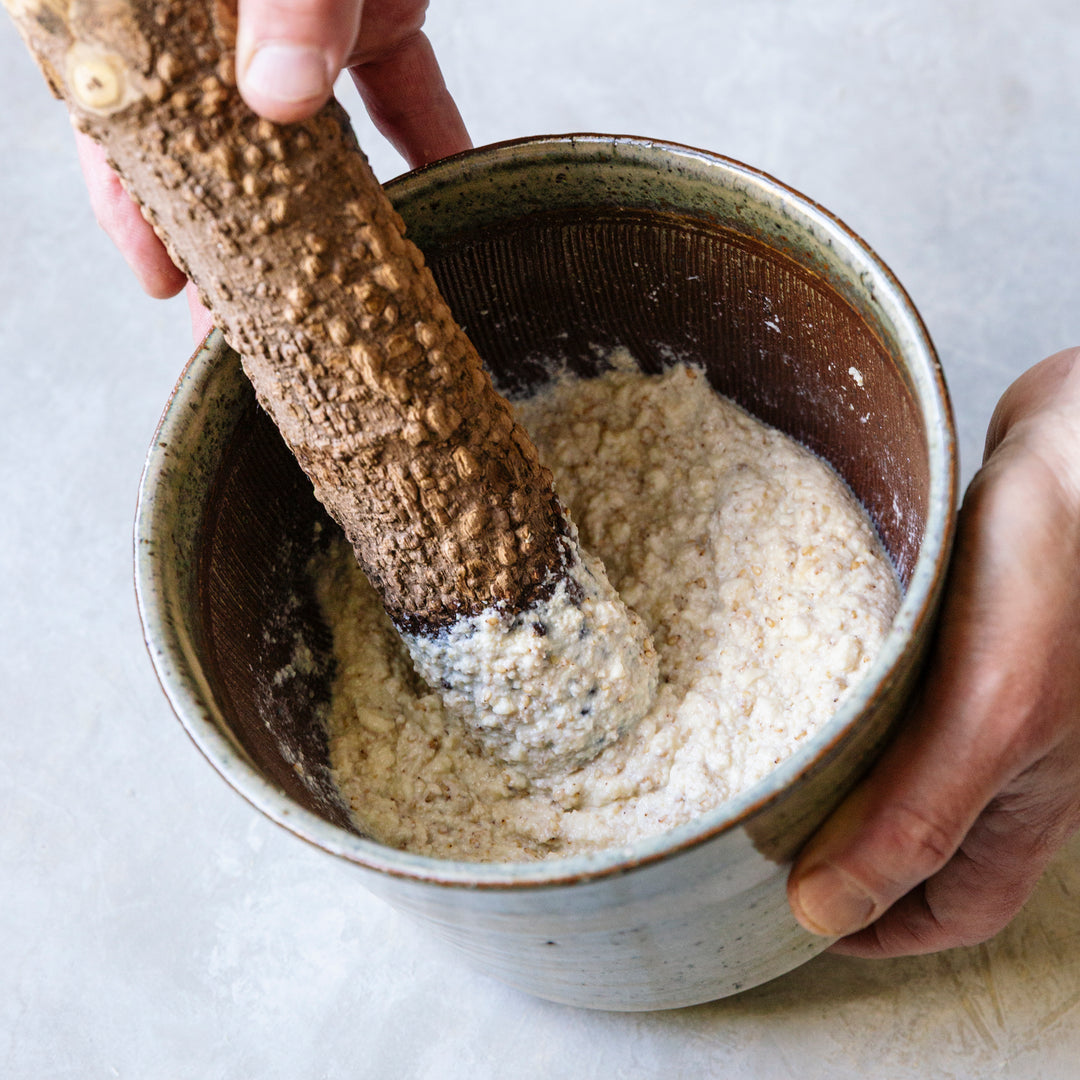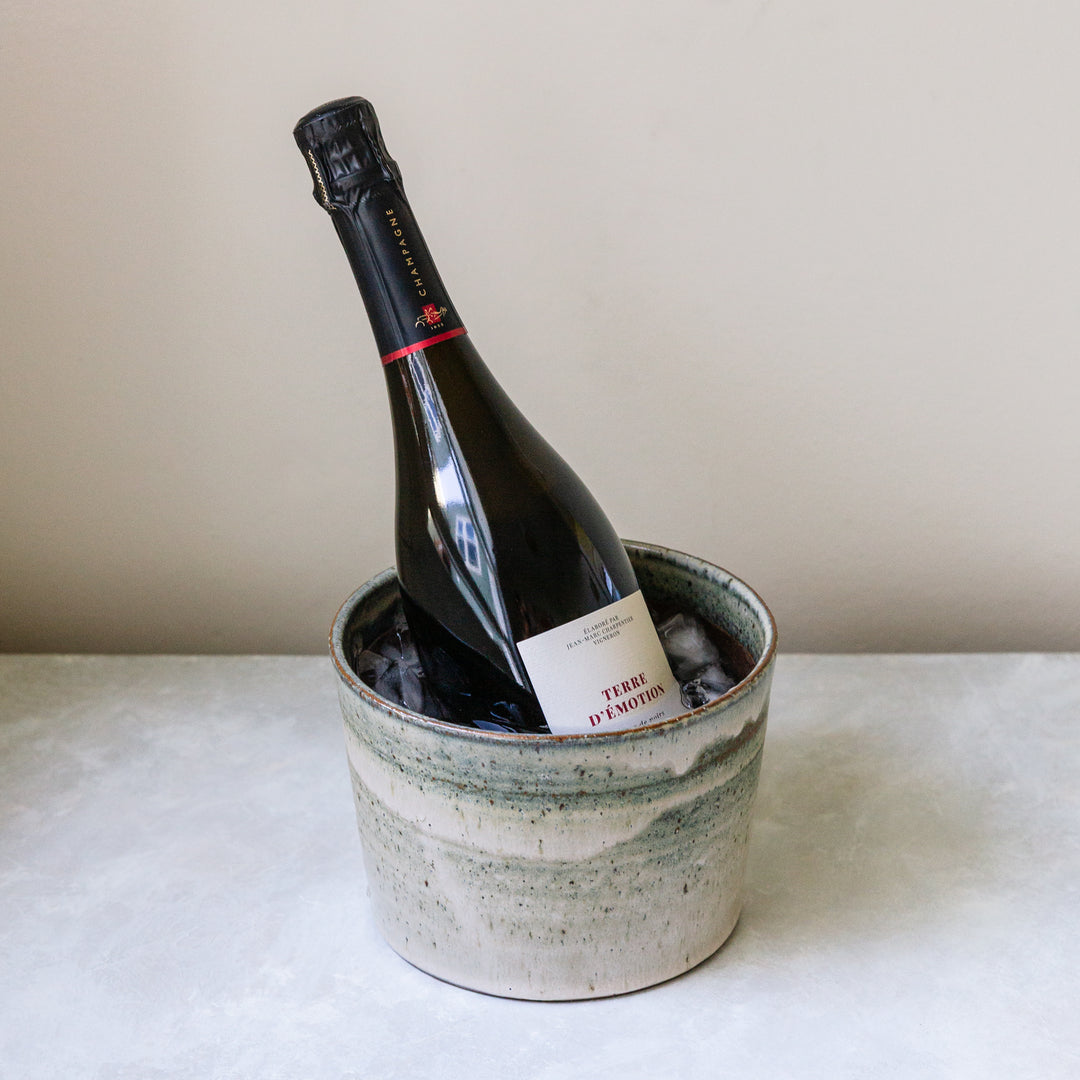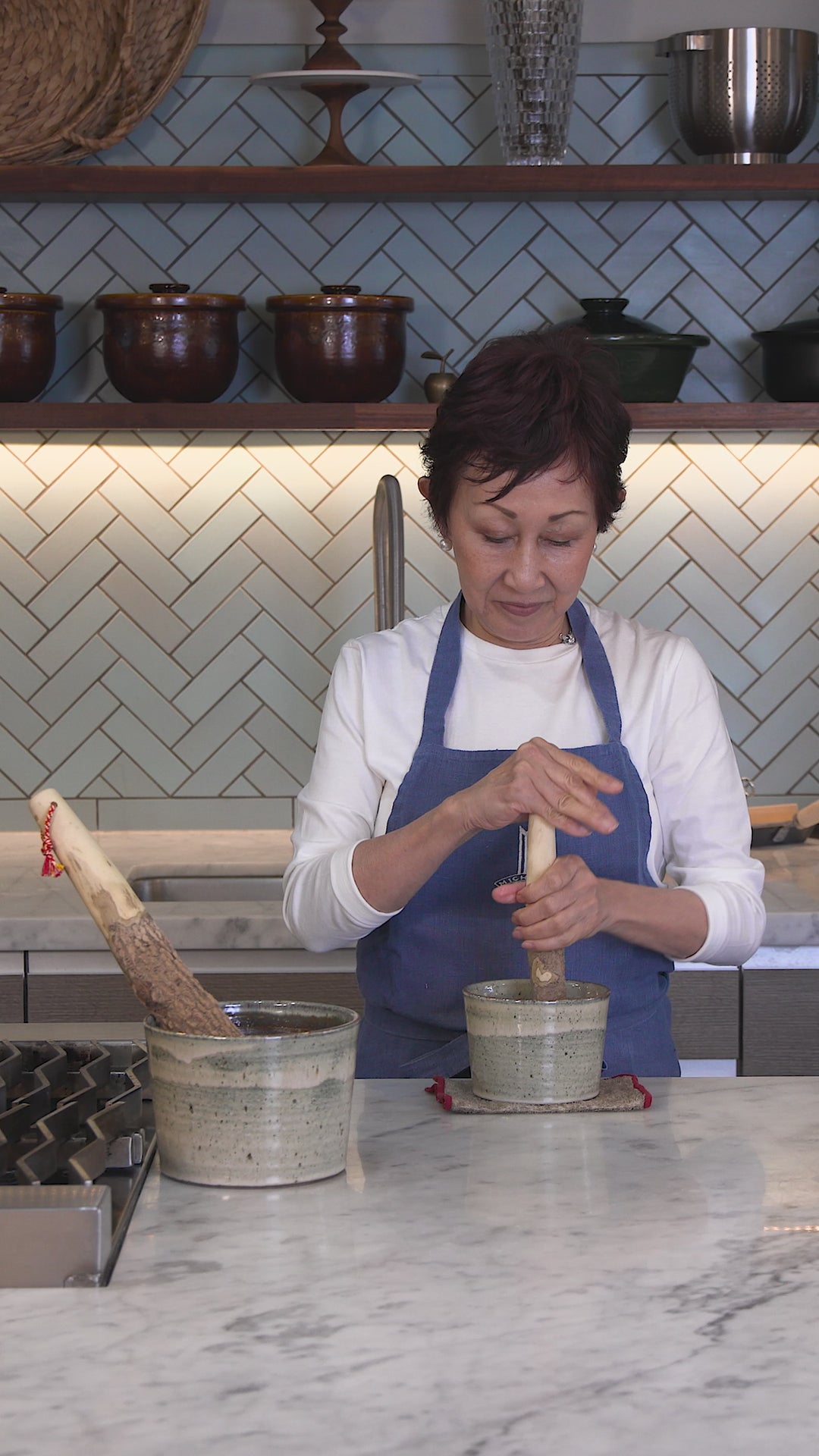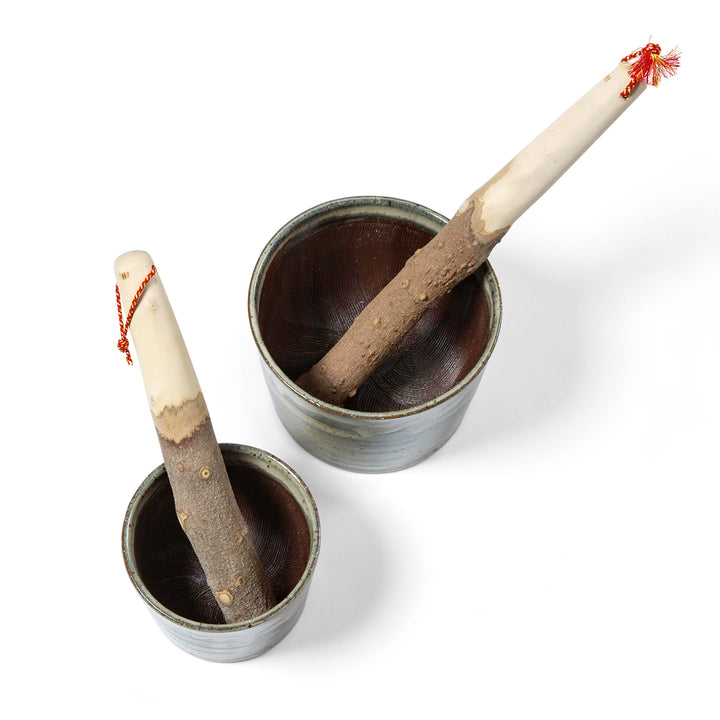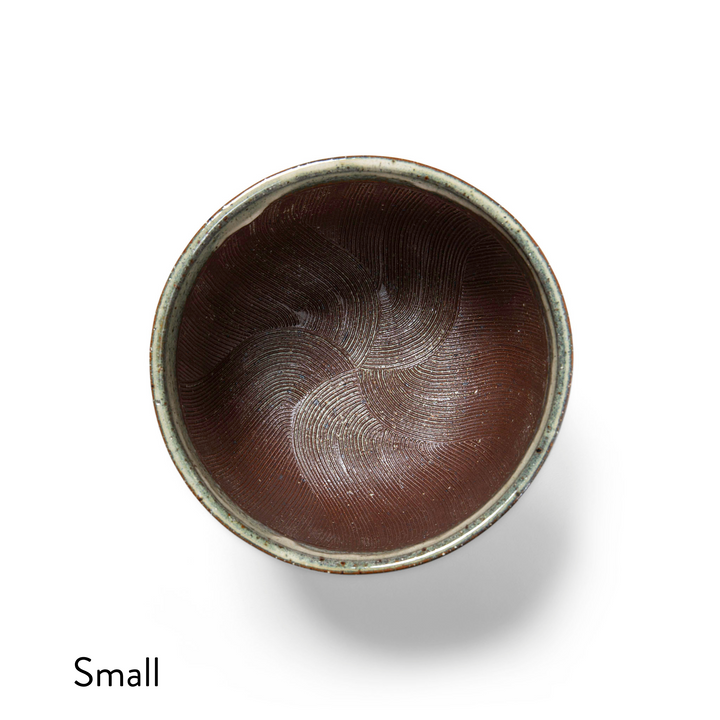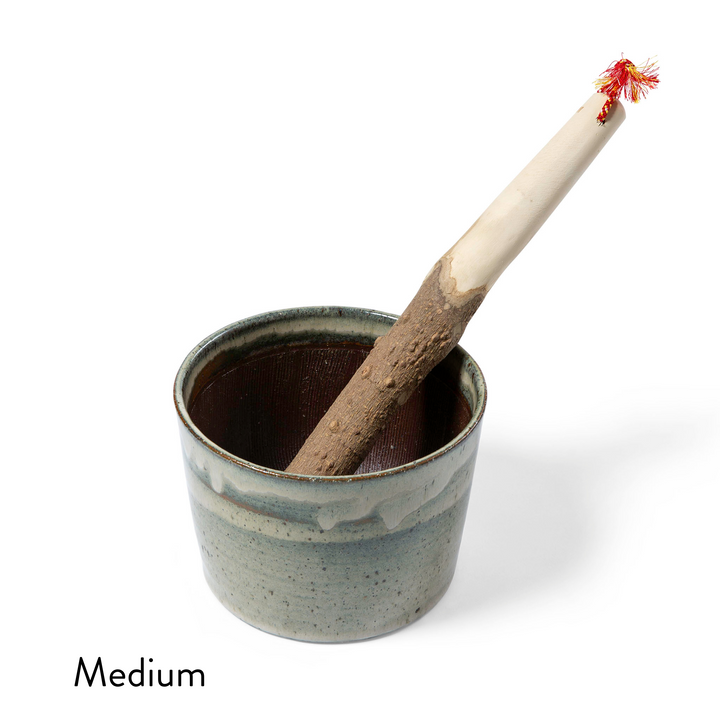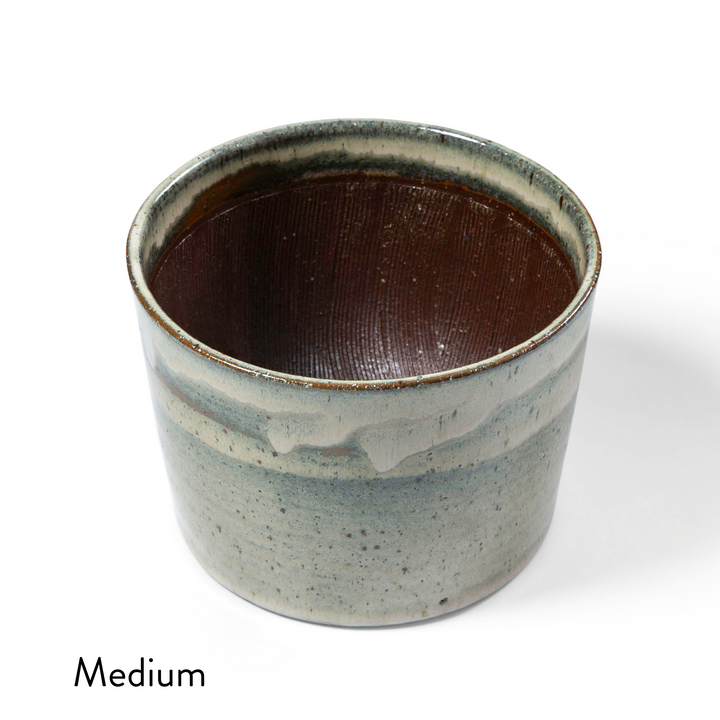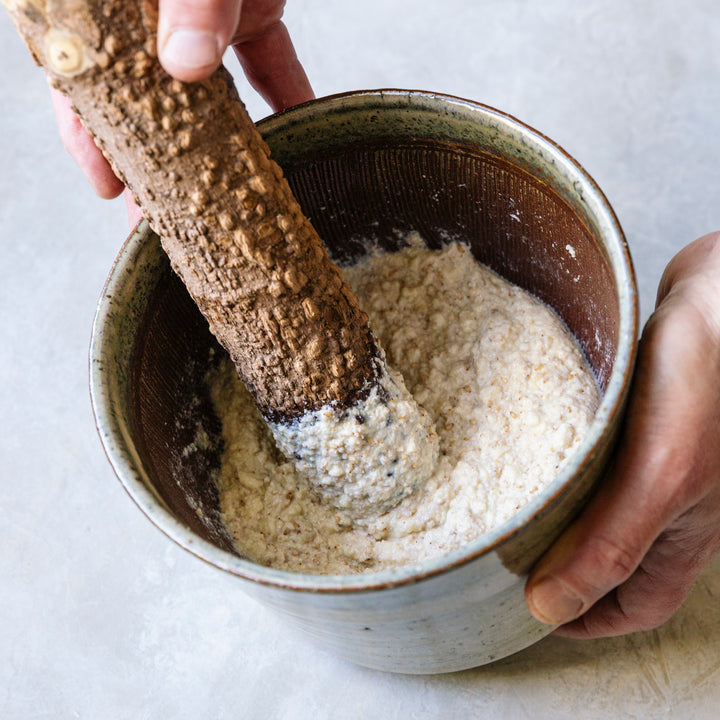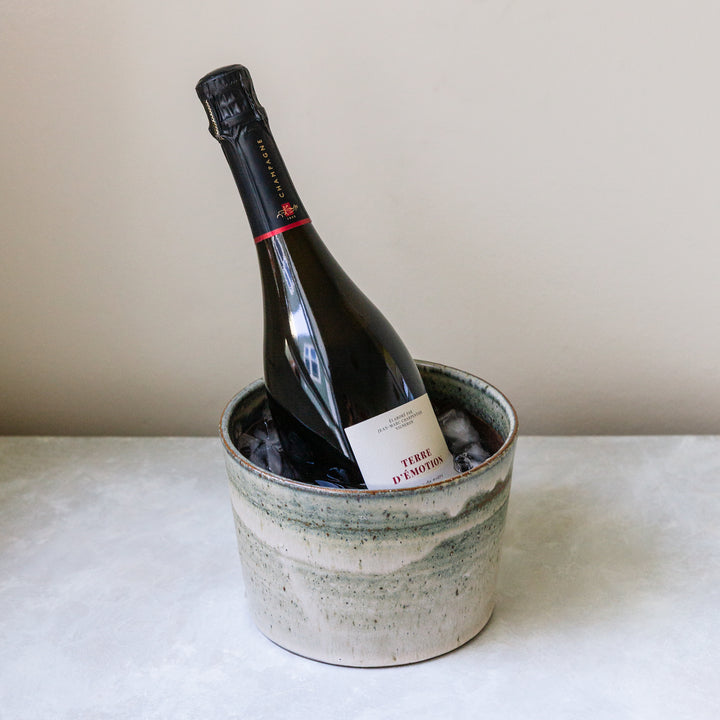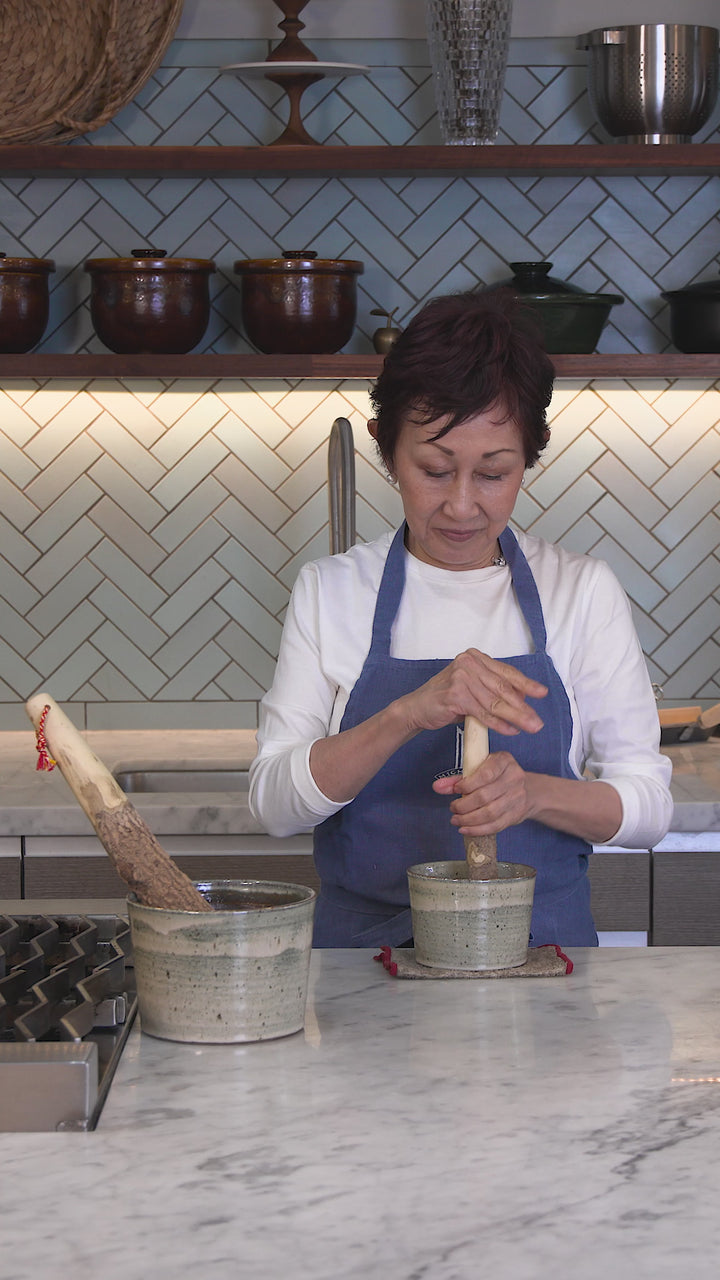Suribachi and Surikogi (Mortar & Pestle)
- In stock, ready to ship
- Backordered, shipping soon
-
A suribachi (mortar) and accompanying surikogi (pestle) are a staple in any Japanese kitchen. They are indispensable when grinding sesame seeds (or anything else) - allowing you to achieve just the right consistency. This beautiful suribachi and surikogi set is another example of the amazing products designed by Michiko Matsuda. Like all of Matsuda-san's Jizai Dougu collection, this suribachi and surikogi set has been uniquely designed to reflect the lessons and wisdom she has gained over more than three decades as a cooking teacher. Working with a potter, Matsuda-san designed this unique suribachi with tall, straight sides to help contain ingredients while grinding, and a wide, flat base to keep it stable during use. The surikogi is crafted of durable, fragrant sansho wood. The bark is left on to create a beautiful, natural handle. We fell in love with this handmade suribachi and surikogi set the first time we saw it.
Fun fact – the medium size is perfect for chilling sake or wine bottles (see photo).
Product Details:
Suribachi (mortar)
- Medium: Height 4.9" (12.5 cm), Diameter 7½" (19 cm)
- Small: Height 3¾ (9.5 cm), Diameter 5.1" (13 cm)
Surikogi (pestle)
- Material: Japanese sansho wood
- Medium: 13.6" (34.5 cm) in length
- Small: 10.6" (27 cm) in length
What follows are Jizai Dougu’s Care and Usage Instructions translated from the original Japanese:
Mortar and Pestle User Manual
Michiko Matsuda's Adjustable Mortar (Suribachi)
Founded in 1794, Yamazuki Katoen is a pottery studio renowned for its dedication to Takada-yaki, a type of Mino-yaki pottery. The seventh-generation master potter, Kato Tomoya, created this mortar after years of research and refinement, culminating in the “Hammon Kushi-me” pattern—a series of rippling grooves that are its most distinctive feature. Mitsuko Matsuda was deeply moved by the beauty of the hard and strong wave pattern and requested that this mortar be crafted according to her ideal design of a wide-mouthed cylindrical shape. Combining design and functionality, the mortar naturally gathers ingredients at the center and has a structure that is easier to grind compared to an inverted V-shaped mortar. Additionally, it can be used as a flower vase, wine cooler, or fruit bowl.
This is one of Matsuda's Jizai Dougu tools.
How to use
Place a damp cloth or rubber mat under the mortar to prevent it from moving. Hold the pestle's head with one hand and grip the center of the pestle with the other hand. Rotate the pestle in a circular motion along the bottom of the mortar to grind the ingredients.How to clean
- Wash with detergent.
- Use a brush to clean the ridges.
- Dry thoroughly before storing.
Surikogi (pestle)
Along with a mortar bowl, this pestle helps delicately fix the food with great flavor and texture by "grinding, dissolving, and mixing" them. The wood of Sansho, the Japanese pepper tree, is very hard and resistant to wear and tear, so it has been used for pestles since ancient times. Also, the extract from the Sansho is believed to be good for internal organs, particularly digestive systems. Everything from the Sansho tree is sufficiently used - from the leaves, flowers, fruits, to skin. Nothing is wasted. Sansho woods are harvested in Aridagawa Town, blessed with abundant nature, located at the Arida River, which originates from the Mt. Koya. With such high quality wood, this pestle is custom made to work well with the mortar bowl and provides comfortable grip in your hand.
To Use
- Wipe off any dust with a dry cloth before use.
- Place the ingredients in the mortar, move the pestle in small circular motion, then large, then small, as if making swirls. It will enable you to mix the ingredients evenly.
- After use, rinse thoroughly with water, wipe off the moisture, and dry thoroughly in shade, well-ventilated. Leaving dirt or moisture on the product can collect mold.
- Avoid excessive heating, drying, soaking in the water for a long period of time. They may cause cracks.
- Not dishwasher safe.
- Do not place near fire. This can cause fires and other accidents.
About cracks
This pestle is made from a whole Sansho trunk or branch, which includes the wooden core. Material with a wooden core is prone to cracking in a dry environment, but if the cracks are minor, you can continue using it.
-
The Jizai Dougu collection of products was started in 2004 by Michiko Matsuda, a renowned cooking teacher and author of over 50 of cookbooks in Japan. Working in conjunction with artisan craftsmen across Japan, Matsuda-san has designed these products to incorporate the vast knowledge she has gained over the past few decades. They are both beautiful and highly functional -- perfect for the home cook.
Learn more about Jizai Dougu


